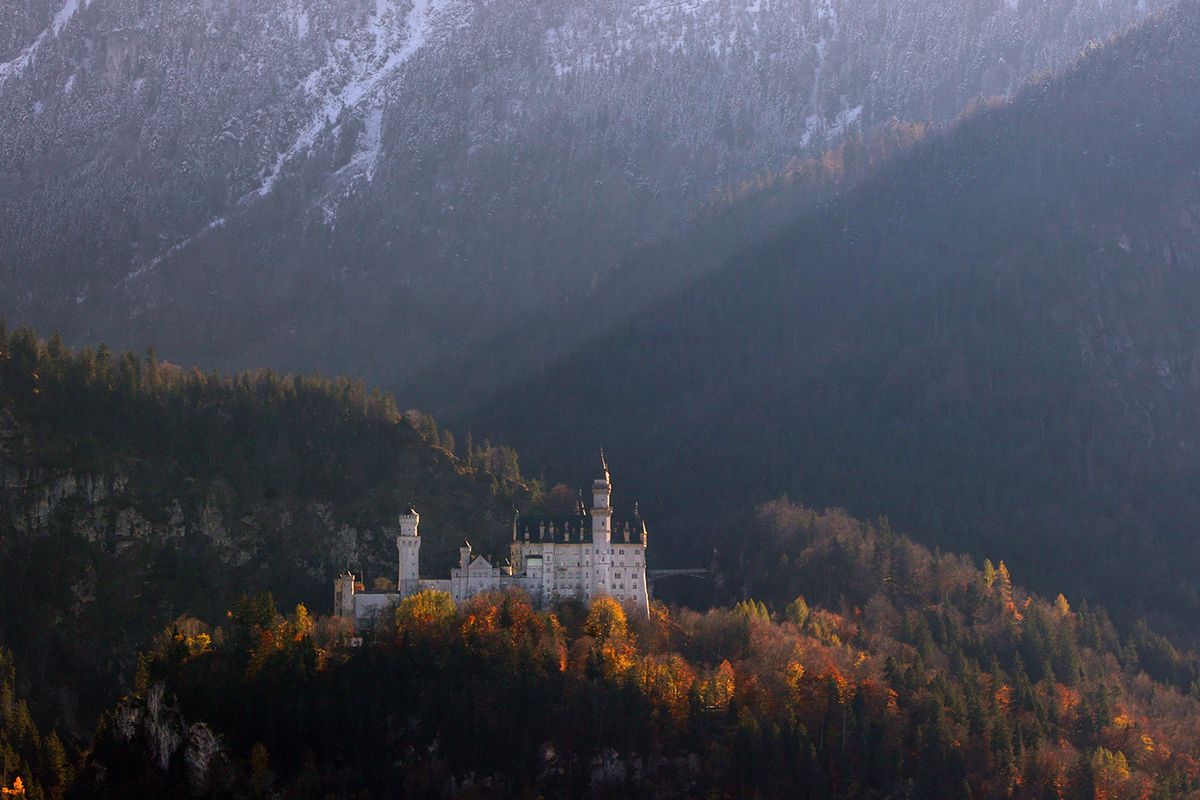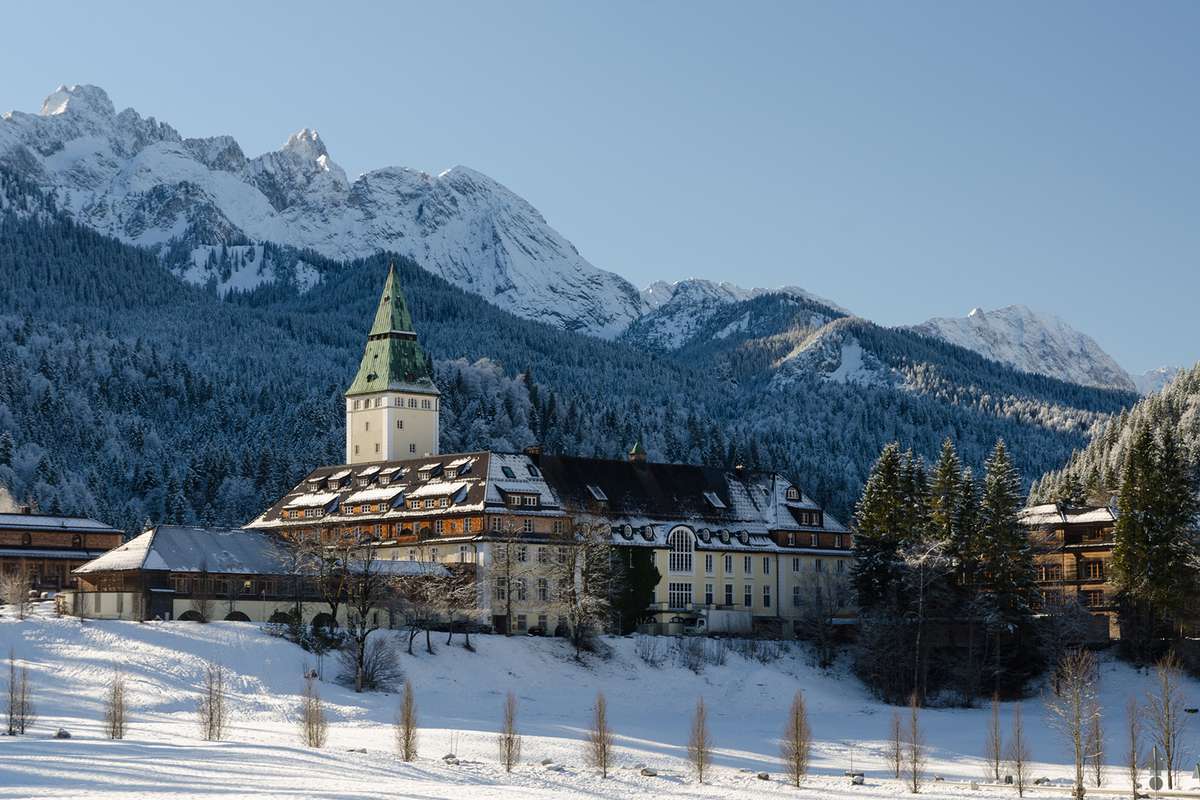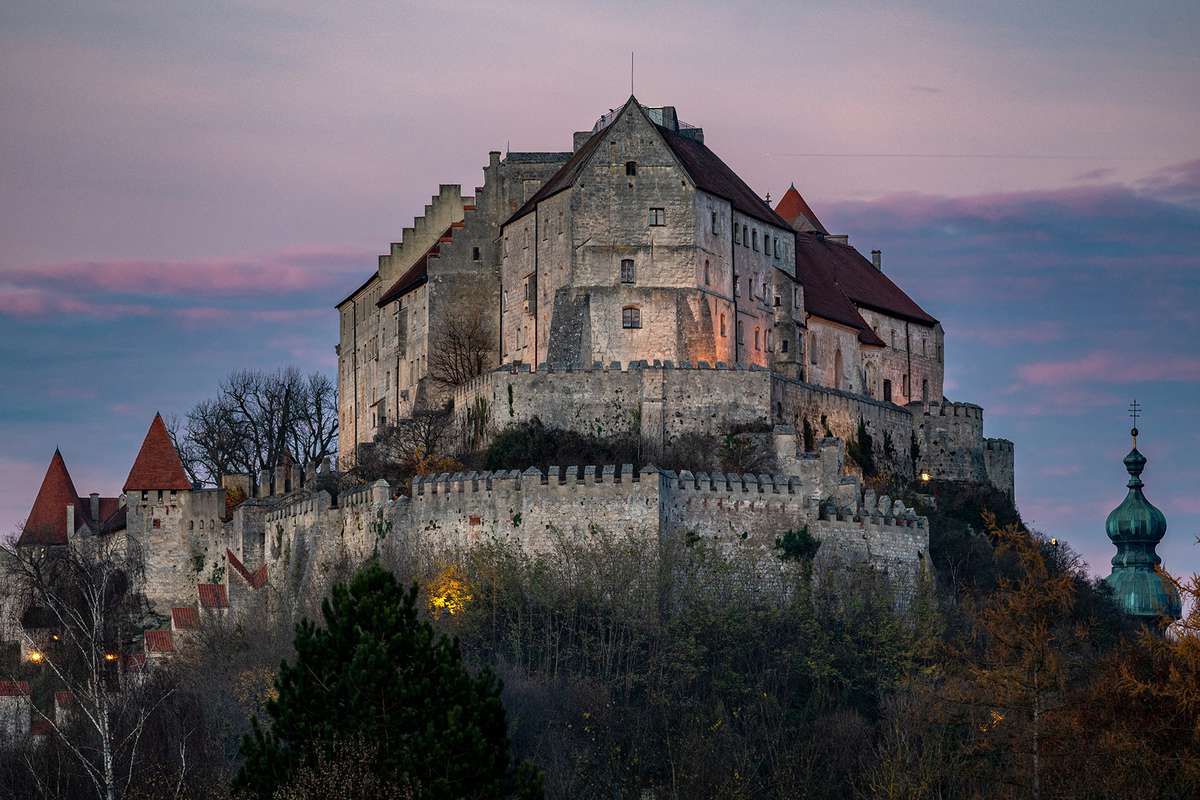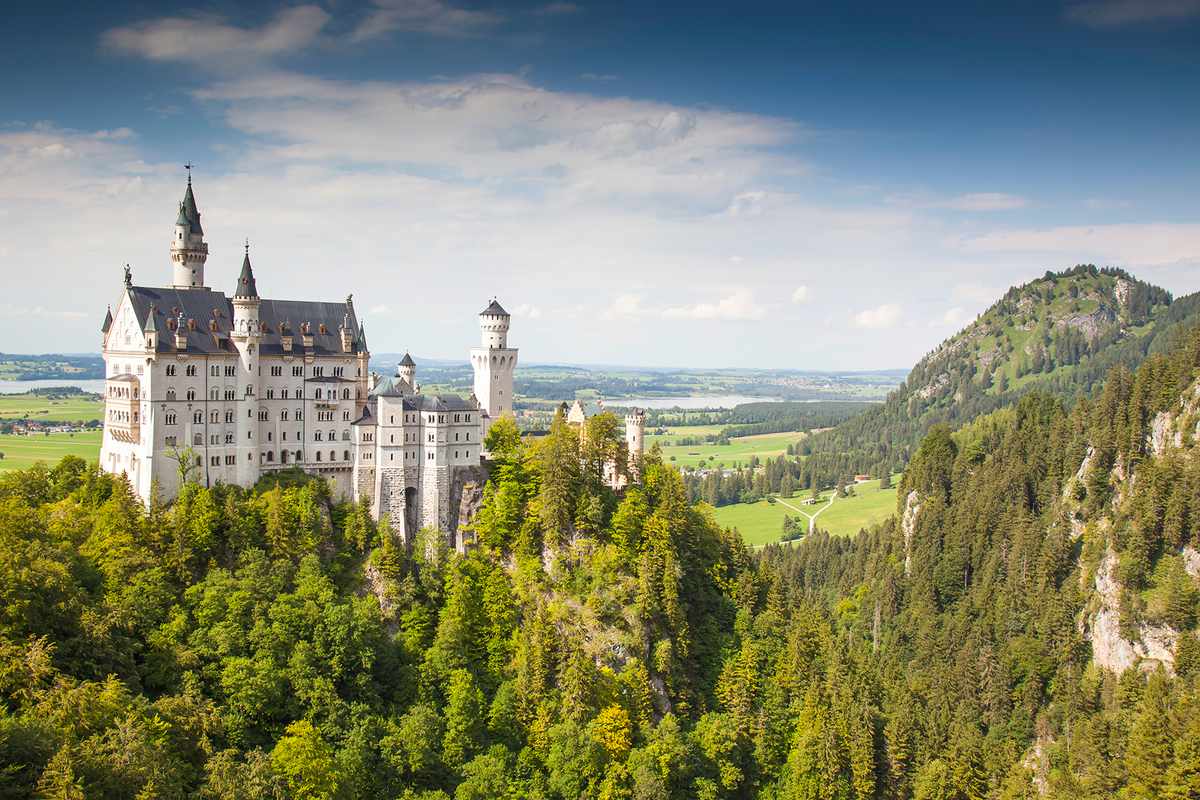12 Fairytale-Inspired German Castles
12 Fairytale-Inspired German Castles
In Germany, you can live out your fairy-tale dreams.

Around 25,000 castles previously stood throughout Germany. Yes, 25,000. According to the History of Yesterday, which combed through data from the European Institute of Castles, just around 15,000 of those castles are still standing, with 60% of them in ruins. However, the website did include this piece as a fun fact: If the 25,000 figure was previously right, that implies there was a German castle every 15 miles at one time.
These were the houses of not just kings and queens, but also knights and nobility across hundreds of years, all of which aspired to create their own status symbol. Consider it their take on a planned development.
These castles remain important parts of German life. They now serve as government buildings, museums, landmarks, hotels, and — in more than a few cases — incredible private homes. Ready to see a few for yourself? Here are just a few of the German castles you need to add to your must-see list.
Eltz Castle

Eltz Castle has seen more than most, including multiple conflicts, and has only suffered little damage. It looks almost identical to how it did in the 15th century, when it housed three noble families. It is still in the hands of one of the original families (the Eltz), who have owned it for 33 generations. And we’re not the only ones who appreciate the castle: its spires were prominently depicted on every 500-mark bill made between 1961 and 1995, when Germany’s national currency was the Deutsche Mark.
Althoff Grandhotel Castle

Originally commissioned as a “grander” version of Versailles, this former hunting château is now a museum. Before being restored as a luxury hotel in the year 2000, it operated as a military hospital, boarding school, and refugee center. Leading Hotels of the World has accepted the hotel as a member. Leather furniture and oak desks are tastefully used in the hotel’s 120 rooms and suites. The hotel also has a 3-star Michelin restaurant, Vendome, with views of the Rhine Valley. Cologne is only 12 miles away from all of this.
Sababurg

Families like this ivy-covered, rose-filled home, dubbed the Sleeping Beauty Castle, for both its fairy-tale appearance (its actual address is on the Fairy Tale Route) and its offerings. Tierpark, Europe’s oldest wildlife park with 80 species including bison, wild horses, and penguins, is located near to the castle. Since 2018, the castle has been receiving significant repairs. Reinhardswald Nature Park, on the other hand, is working with the state of Hesse to enable visitors access to the castle courtyard and sun terrace in order to enjoy its beauty. You might even catch a glimpse of Sleeping Beauty and Prince at certain moments if you’re lucky.
Wartburg

The first sight of this Norman fortress is extremely impressive. Travelers first approach through dense forest, which abruptly gives rise to soaring stone ramparts and a watchtower, which are strategically hidden from view. With a history extending back approximately 1,000 years, Wartburg is one of the best-preserved medieval German fortifications. Martin Luther is claimed to have spent six weeks translating the New Testament into German here, and Wagner used it as a retreat while writing his famous Tannhauser opera.
Schloss Elmau

Schloss Elmau, a pastoral jewel set against the Bavarian Alps (with Germany’s highest peak, Zugspitze, only 30 miles away), hosted the worldwide G7 meeting in 2015. The old structure had to be rebuilt after a devastating fire in 2005, however the premises have since been restored. Two world-class spa hotels, complete with restaurants, yoga facilities, a hammam, outdoor pools, a music hall, and guided nature excursions, offer travelers — particularly families — the opportunity to arrange a full vacation here.
Schwerin Castle

Built on an island within Lake Schwerin, this Neo-Renaissance castle is totally encircled by water and accessible to the mainland by a single bridge. Schwerin’s first records originate from 793, when it was utilized as a military fort, however the castle we see today was not erected until 1857. Schwerin Castle today houses the State Parliament, as well as a museum, porcelain collection, and concert venue, instead of Grand Dukes and Prussian officers.
Dornburg

Dornburg is a candy-colored fortress with three unique castles, each belonging to a different time, fronted by English and French-style gardens and bordering the Saale river. The Rococo and Renaissance castles are open to the public, while the Old Castle (built in 1573) is exclusively open to visitors on special guided excursions. Goethe, the famed German poet, used to come here, and there’s even a museum dedicated to his work.
Kronberg Castle

If you’re looking for a quick day trip from Frankfurt, you’ve come to the right place. This magnificent mansion, which was formerly a royal residence, is a strong contender. Empress Victoria (the first child of Queen Victoria of England) planned to build a neo-Gothic castle for herself in the late 1800s that merged German Renaissance and English Tudor designs. The final product is stunning. Today’s visitors can stroll through the hallways, which are brimming with antique paintings and tapestries. A golf course, a number of restaurants, and a whiskey bar with live jazz are all available.
Burghausen Castle

Burghausen Castle is a hardy 11th-century castle with brilliant red tile roofs that overlooks the Salzach River. Don’t be fooled by its attractiveness. It was formerly a horrifying location for torture and executions (there’s even a museum with numerous iron instruments on show). It is the world’s longest castle, standing 3,422 feet tall and housing a spectacular collection of late Gothic panel paintings as well as a cycle depicting Bavaria’s history.
Neuschwanstein Castle

King Ludwig II constructed this gravity-defying cliffside castle, which has two enormous banquet halls and an artificial indoor cave, in the mid-1800s to symbolize the ideal (or, at least, his ideal) medieval fairy-tale castle. Ludwig was so engrossed with his own idea that he had it designed by a theatrical set designer rather than an architect. In the bleak Bavarian Alps, the effect is an indisputably big silhouette that sparkles like a crown. We wouldn’t expect anything less from someone who once said, “I wish to remain an eternal mystery to myself and others.”
Lichtenstein Castle

The 14th-century Lichtenstein Castle had fallen into disrepair and would have remained so if owner Count Wilhelm hadn’t grabbed the opportunity to have the entire medieval castle reconstructed in 1842. The Count based his design on the original castle walls, which rest on a cliff edge, after being inspired by the novel Lichtenstein. Inside, visitors can see original paintings, stained glass, and medieval military armor.
Hohenzollern

This neo-Gothic mountaintop residence was renovated three times over the span of eight centuries, making it one of Germany’s most visited castles. The current version, created by late-nineteenth-century Prussian King Frederick Williams IV, includes a letter from George Washington commending Baron von Steuben (a descendant of Hohenzollern) for his service in the American Revolutionary War.
See More: https://bit.ly/3uOFJlE



